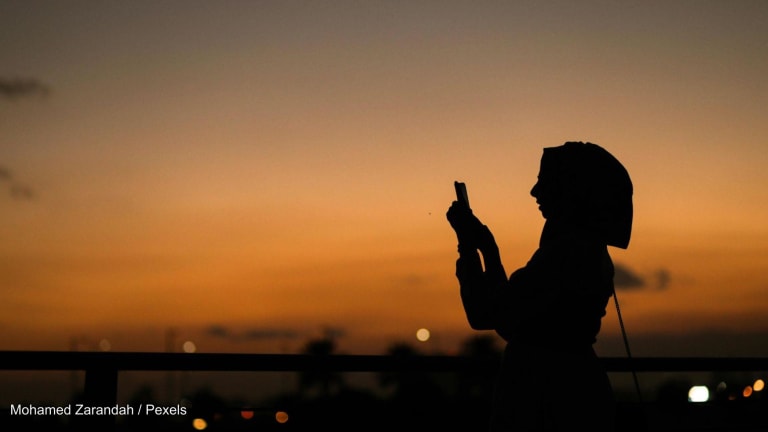
As the international community gears up for the very first World Humanitarian Summit focusing on solutions to the most intractable humanitarian challenges, educating displaced adolescent girls must be a top priority.
A new report from the Georgetown Institute for Women, Peace and Security titled “Closing the Gap: Adolescent Girls’ Access to Education in Conflict-Affected Settings” details opportunities for effective action.
Sixty-two million girls around the world are not in school, and at least 20 million of them live in conflict-affected and fragile settings as refugees, internally displaced persons, or otherwise vulnerable populations. There is a clear link between gender inequality, lack of access to education, and conflict. Four of the five countries that currently have the largest gender gaps in education also experience high levels of conflict. As millions of refugees continue to flee Syria to seek safety and security in Jordan, Lebanon and Turkey, schools are increasingly overwhelmed and overburdened.
A growing body of evidence demonstrates that educating girls is the single best investment that a country or community can make, particularly in fragile settings. Investing in education for girls is a key factor in sustainable development — it lowers maternal and infant mortality, reduces early or forced marriage, increases financial independence, and boosts economic growth. When 10 percent more girls go to school, a country’s GDP increases on average by 3 percent, and wages rise 20 percent for every year beyond fourth grade that a girl remains in school. The data on this issue is clear: Educating girls strengthens families, communities and societies.
Read related stories:
► Universal education champions fight 'primary' battle of their own
► How to get education technology right
► Advancing the SDGs through inclusive education
► Careers in global development education: What you need to know
Despite these known dividends, we continue to see gaps in funding for adolescent girls’ education. While the Millennium Development Goals spurred significant progress in gender parity rates for primary education, girls remain far behind in secondary school enrollment and completion. Growing rates of displacement have made narrowing these gaps all the more challenging. Education also tends to straddle funding streams directed to development and humanitarian crises, perpetuating a funding gap. And as conflicts and crises worsen, the capacity and willingness of schools and host countries to accommodate influxes of refugees steadily declines.
The report from Georgetown University highlights key areas that must be addressed, including transition and disruption, capacity gaps, lack of financial support for families, personal insecurity, and social norms. Nontraditional educational support has emerged as an effective response to the lack of capacity in public school systems to absorb displaced students. These interventions include “catch-up” courses, accelerated learning programs, courses in local languages, education orientation programs, open-source technology, and distance-learning courses, which are proving effective in various refugee settings.
To deal with the financial constraints of many displaced families, the international community has adopted successful assistance programs. In Jordan, there has been demonstrated support to waive school fees for displaced students. In Zambia, Zimbabwe, Ethiopia, Colombia, Kenya and other fragile or conflict-affected settings. And scholarships have been provided for girls to cover the broader costs associated with attending school, including uniforms, books, shoes, and stationery.
Communities have also developed creative approaches to address the personal security challenges facing girls who attend school in difficult settings. In Lebanon, the community-led “walking school bus” ensures safe passage to and from school for girls. In another part of the country, an NGO operates a mobile learning center in a bus so that students can access resources and services in their own communities.
The provision of data from these settings is critical to ensuring that effective services are provided. To further build the evidence base and learn what is working, OpenEMIS Refugees (developed by UNESCO) tracks education data in emergency settings, and has been used in Jordan to collect information on displaced children attending schools.
Stakeholders have developed these and other innovative solutions to address the challenges facing adolescents in accessing quality education in conflict-affected and fragile settings. Yet there remains an obvious and pressing need for increased funding and support for these programs. At the first World Humanitarian Summit, which will take place May 23-24 in Istanbul, a compelling opportunity exists to prioritize the needs and capacities of the next generation.
The World Humanitarian Summit — with a core mission to protect humanity and ensure those most at risk are not left behind — should place a high priority on the education and safety of adolescent girls who are displaced by conflict. Development practitioners must work to ensure that girls are protected from violence in all its forms and to address the unique needs of this population, from access to hygiene and private spaces to livelihood skills, self-esteem and trauma recovery.
This must include identifying funding streams and partnerships to ensure that access to quality education is provided and needs are met, both in camp and noncamp settings, by qualified teachers and mentors. This includes the new Education Cannot Wait Fund, which will be formally announced at the summit. Investments must be focused on what's proven to work and on adopting and adapting best practices appropriately. Assessments and decisions must be based on the best available data.
By placing a spotlight on the challenges of education in emergency situations, particularly for adolescent girls, we can begin to build bridges between the groups working on these issues, and ensure that what is working can have the greatest impact.
Join the Devex community and access more in-depth analysis, breaking news and business advice — and a host of other services — on international development, humanitarian aid and global health.




